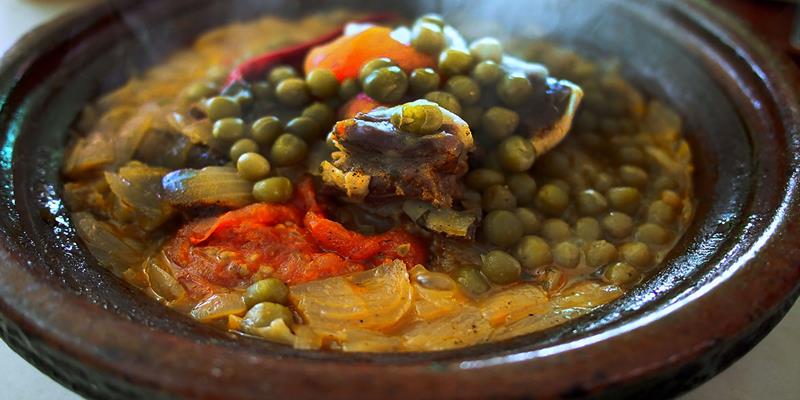Introduction
When it comes to experiencing the rich tapestry of Moroccan cuisine, there's no dish more emblematic than the aromatic and flavorsome Tajine. Originating from the North African nation, Tajine represents more than just a meal; it's a cultural cornerstone, a symbol of hospitality, and a reflection of the diverse influences that have shaped Moroccan culinary traditions over centuries. In this article, we delve into the tantalizing world of Tajine, exploring its origins, ingredients, and why it remains the tastiest way of experiencing Morocco.
The Origins of Tajine
To truly appreciate Tajine, one must understand its historical roots, deeply embedded in Moroccan culture. 'Tajine' refers to the iconic clay pot in which the dish is cooked and the culinary masterpiece that emerges from it. The design of the Tajine pot, with its distinctive cone-shaped lid, is ingeniously crafted to ensure that condensation forms on the underside of the lid, allowing for a slow and gentle cooking process that tenderizes meats and infuses ingredients with layers of flavor.
This ancient cooking vessel has been used by Berber tribes for generations, adapting to various regional ingredients and cooking methods along the way. Today, Tajine remains an integral part of Moroccan culinary heritage, cherished in homes and restaurants for its ability to unite people over a shared meal.
The Ingredients and Flavors of Tajine
Central to the allure of Tajine are the vibrant and aromatic ingredients that come together harmoniously to create a symphony of flavors. At its core, Tajine typically features a combination of meat, poultry, or fish paired with an assortment of vegetables and fruits, all infused with a medley of herbs and spices. Commonly used meats include lamb, chicken, and beef, each adding distinct richness to the dish.
Vegetables such as onions, tomatoes, carrots, and potatoes lend their earthy sweetness, while dried fruits like apricots, dates, and prunes contrast sweet and savory notes. The spice blend, known as Ras el Hanout, is the secret weapon in many Tajine recipes, boasting a complex mixture of cinnamon, cumin, paprika, turmeric, and other aromatic spices that elevate the dish to new heights of flavor.
Cooking Techniques and Variations
The beauty of Tajine lies not only in its ingredients but also in the diverse cooking techniques and regional variations that contribute to its endless versatility. Traditionally, Tajine is slow-cooked over low heat, allowing the flavors to develop and meld together over time.
This gentle cooking method results in tender meats, succulent vegetables, and a rich, fragrant sauce that coats every bite. While the basic principles of Tajine remain consistent, each region of Morocco puts its unique spin on the dish, incorporating local ingredients and culinary traditions.
From the coastal cities of Casablanca and Essaouira, where seafood Tajine reigns supreme, to the mountainous regions of the Atlas Mountains, where hearty lamb Tajine is a winter staple, the diversity of Tajine reflects the diverse landscapes and cultures of Morocco. Whether it's the tangy sweetness of a chicken and preserved lemon Tajine or the fiery heat of a lamb and harissa Tajine, there's a variation of Tajine to suit every palate and occasion.
Serving and Enjoying Tajine
Partaking in a Tajine feast is not merely about satisfying hunger; it's a sensory experience that engages all aspects of the palate and the soul. Traditionally, Tajine is served family-style, with the communal pot placed at the center of the table, inviting diners to gather closely and share in the bounty. Breaking bread together, dipping into the aromatic stew, and savoring each mouthful is a cherished ritual that fosters connection and camaraderie. Accompanying Tajine, you'll often find a mound of fluffy couscous, a staple grain in Moroccan cuisine, which serves as the perfect vehicle for soaking up the luscious sauce.
Cultural Significance of Tajine

Beyond its culinary prowess, Tajine holds deep cultural significance in Moroccan society, symbolizing hospitality, generosity, and shared heritage. In Moroccan homes, the preparation of Tajine is a labor of love, with recipes passed down through generations and carefully guarded family secrets. Inviting guests to partake in a Tajine meal is a gesture of warmth and welcome, a demonstration of hospitality that transcends language barriers and cultural differences.
Moreover, Tajine embodies the spirit of resourcefulness and ingenuity, with cooks making the most of local ingredients and simple cooking techniques to create nourishing and delicious dishes. Whether enjoyed in a bustling souk in Marrakech or a cozy riad in Fes, the experience of savoring Tajine leaves an indelible mark on visitors, offering a tantalizing glimpse into the heart and soul of Moroccan culture.
Exploring the Nutritional Value
While Tajine is celebrated for its exquisite flavors and cultural significance, it also offers many health benefits thanks to its nutritious ingredients and cooking methods. Combining lean proteins, such as chicken or fish, with abundant vegetables creates a well-balanced meal packed with essential vitamins, minerals, and antioxidants.
From the vitamin C-rich tomatoes to the fiber-packed carrots and the potassium-loaded potatoes, each component of Tajine contributes to overall health and well-being. Additionally, the slow-cooking process helps to retain the nutrients in the ingredients, ensuring that they are preserved and readily available for absorption by the body.
Promoting Digestive Health

One of the key advantages of Tajine is its gentle cooking method, which allows for the gradual breakdown of ingredients and the development of complex flavors without excessive use of fats or oils. This slow simmering process not only enhances the taste and texture of the dish but also aids in digestion by making the ingredients more easily digestible.
Furthermore, fiber-rich vegetables and fruits help to promote regularity and prevent digestive issues such as constipation. Whether it's the soluble fiber in onions and potatoes or the insoluble fiber in carrots and celery, Tajine provides a wholesome source of dietary fiber that supports a healthy gut microbiome and overall digestive health.
Conclusion
Tajine is a culinary masterpiece encapsulating Morocco's essence its rich history, diverse flavors, and warm hospitality. From its humble origins as a clay pot cooking method to its status as a beloved national dish, Tajine continues to captivate the hearts and taste buds of food enthusiasts worldwide. So, if you ever find yourself craving a taste of Morocco, look no further than the aromatic delights of Tajine a journey for the senses that promises to transport you to the vibrant streets and bustling markets of this enchanting North African nation.




